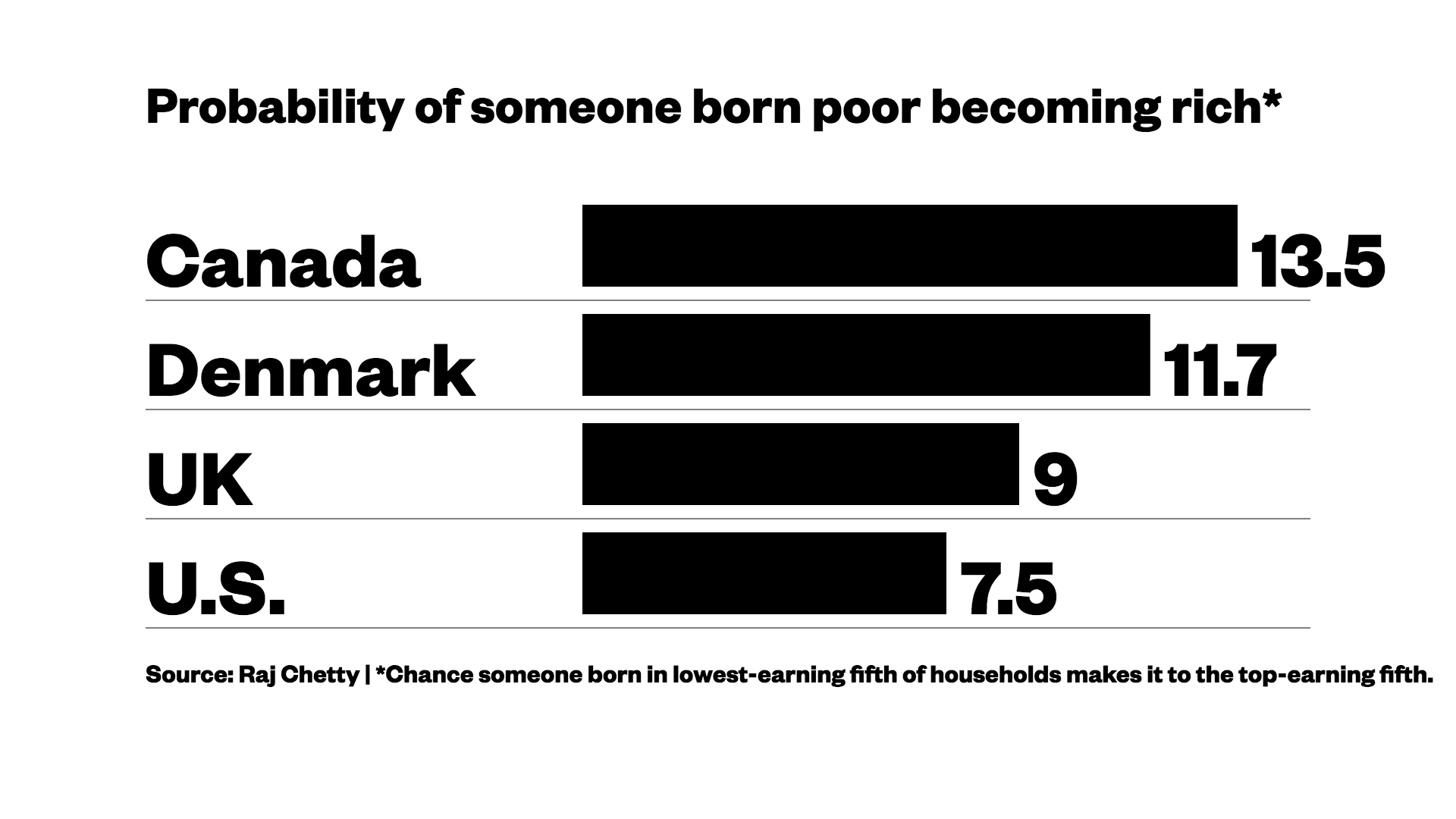The chances of achieving the American dream are almost twice as high in Canada as in the U.S.One of America’s foremost young economists, Stanford’s Raj Chetty, highlighted that finding in a lecture at London School of Economics Monday, which offered a mini-survey on economics of social mobility. It was the first of three lectures he’s set to deliver on the topic this week.Social mobility, the rise and fall of people in society, is a cornerstone of America’s meritocratic self-image.But Chetty started his lecture with a big-picture analysis of the state of the American dream, the classic rags-to-riches story in which someone born poor rises to the highest levels of society by dint of talent and gumption.Only about 7.5 percent of U.S. children born to parents in households in the bottom 20 percent of earners rise to the highest level of American earners. That’s lower than the rate in other developed nations such as Denmark (11.7) , the United Kingdom (9 percent), and Canada (13.5 percent). That figure for Canada might not look too high. But given that a perfectly mobile society would be limited to a max of 20 percent of people rising into the 20 percent of earners, these are big gaps, Chetty said.“These are actually quite large differences in upward mobility across countries,” he said. “One way to think about it is your chances of achieving the American dream are almost two times higher if you’re growing up in Canada than in the United States.”It’s an arresting finding, but the bulk of Chetty’s lecture looks at large differences in social mobility rates across the U.S. He notes, for example, that metropolitan areas with lower social mobility also tend to be segregated, with a relatively small middle class, poorer school quality, and more single parents. The entire lecture is worth a listen.
That figure for Canada might not look too high. But given that a perfectly mobile society would be limited to a max of 20 percent of people rising into the 20 percent of earners, these are big gaps, Chetty said.“These are actually quite large differences in upward mobility across countries,” he said. “One way to think about it is your chances of achieving the American dream are almost two times higher if you’re growing up in Canada than in the United States.”It’s an arresting finding, but the bulk of Chetty’s lecture looks at large differences in social mobility rates across the U.S. He notes, for example, that metropolitan areas with lower social mobility also tend to be segregated, with a relatively small middle class, poorer school quality, and more single parents. The entire lecture is worth a listen.
Advertisement
